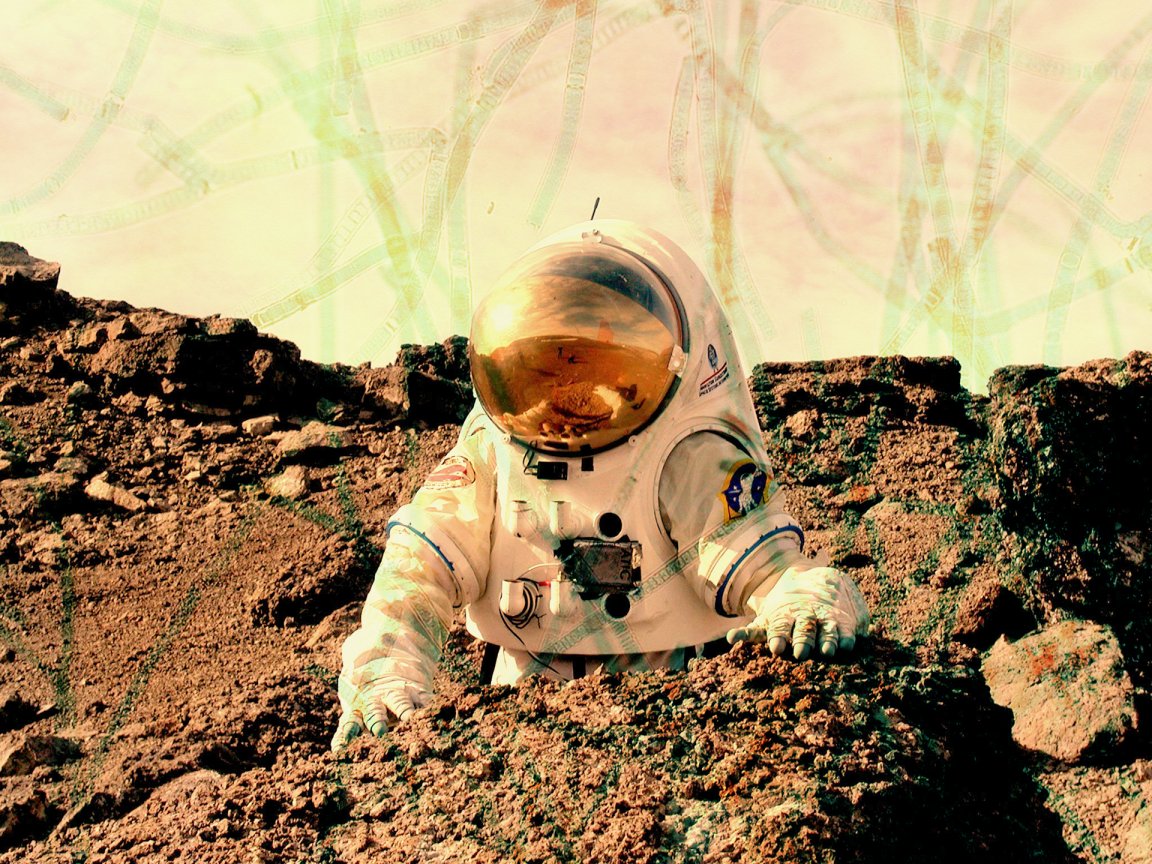
Forget constructing cool Martian habitats, growing food, or digging tunnels. If we can’t figure out a way to breathe on Mars, what’s the point of all of our colonization plans?
Now, we may have a new hope in the hunt for a steady supply of oxygen on the Red Planet: cyanobacteria. This family of bacteria sucks up carbon dioxide and discharges oxygen in some of Earth’s most inhospitable environments. On Friday, a team of researchers published a new study in the journal Science linking the tiny organisms to the possibility of human life on Mars.
Remember photosynthesis? It’s how plants and other organisms convert sunlight into energy. Cyanobacteria also use photosynthesis to produce energy, but they’re able to do so in conditions with far less sunlight than what you need to grow your tomato plants. In fact, scientists have found cyanobacteria thriving in the deepest trenches in the ocean.
A key part of the photosynthesis process is the chemical chlorophyll. Most plants and organisms convert visible light into energy using chlorophyll-a. The researchers figured out that cyanobacteria use a special kind of chlorophyll, chlorophyll-f, to convert far-red/near infrared light into energy. This is how they’re able to live in such low-light environments.

“This work redefines the minimum energy needed in light to drive photosynthesis,” study co-author Jennifer Morton said in a news release. “This type of photosynthesis may well be happening in your garden, under a rock.”
The upshot: we can send cyanobacteria to Mars to produce oxygen for colonists in the future, the researchers note. We’ve already found the organisms living in the Mojave Desert, Antarctica, and even on the exterior of the International Space Station (ISS), so they seem well-equipped to survive the harsh conditions of our planetary neighbor.
“This might sound like science fiction, but space agencies and private companies around the world are actively trying to turn this aspiration into reality in the not-too-distant future,” said study co-author Elmars Krausz in the press release. “Photosynthesis could theoretically be harnessed with these types of organisms to create air for humans to breathe on Mars.”
Now that we have a solid lead on a source of extraterrestrial oxygen, go ahead and start mentally constructing that Martian habitat of your dreams. You might not be able to actually live in it for another couple of decades, but at least you’ll likely be able to breathe once you move in.